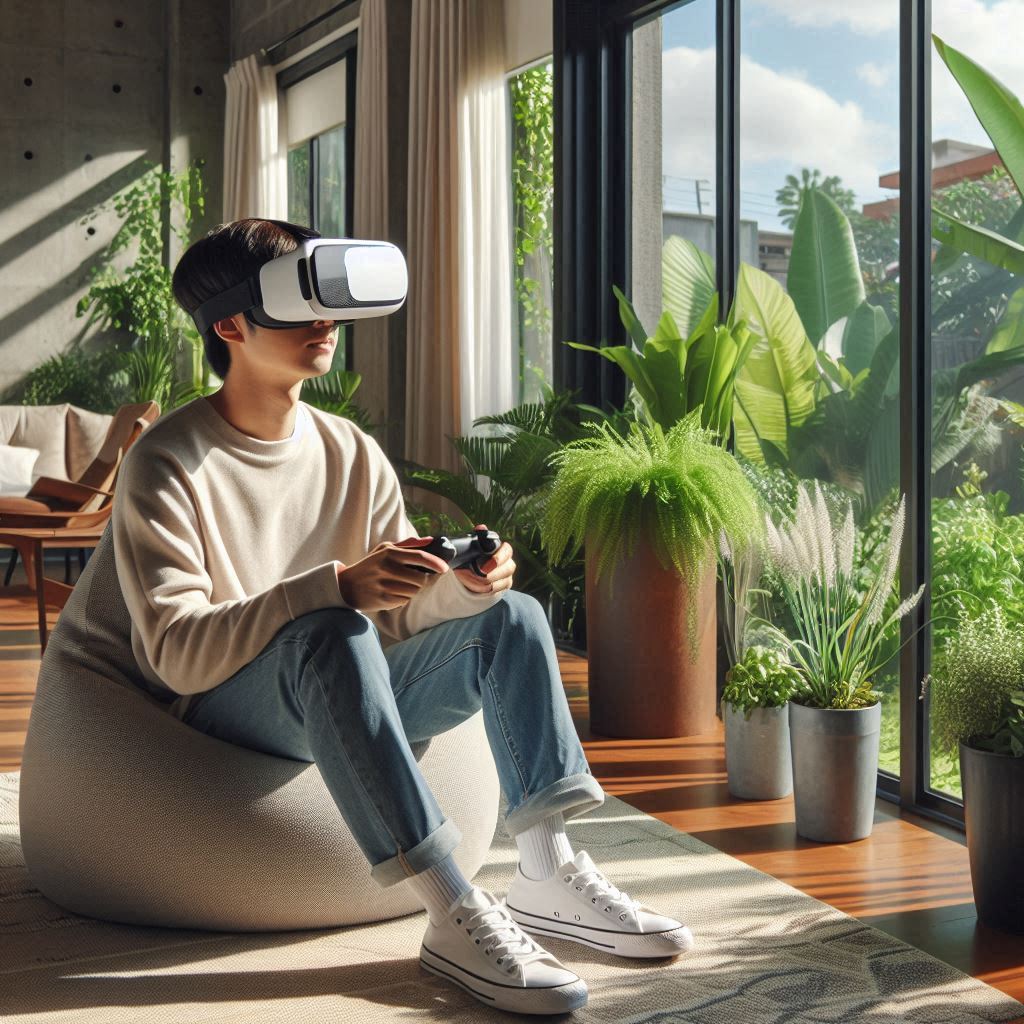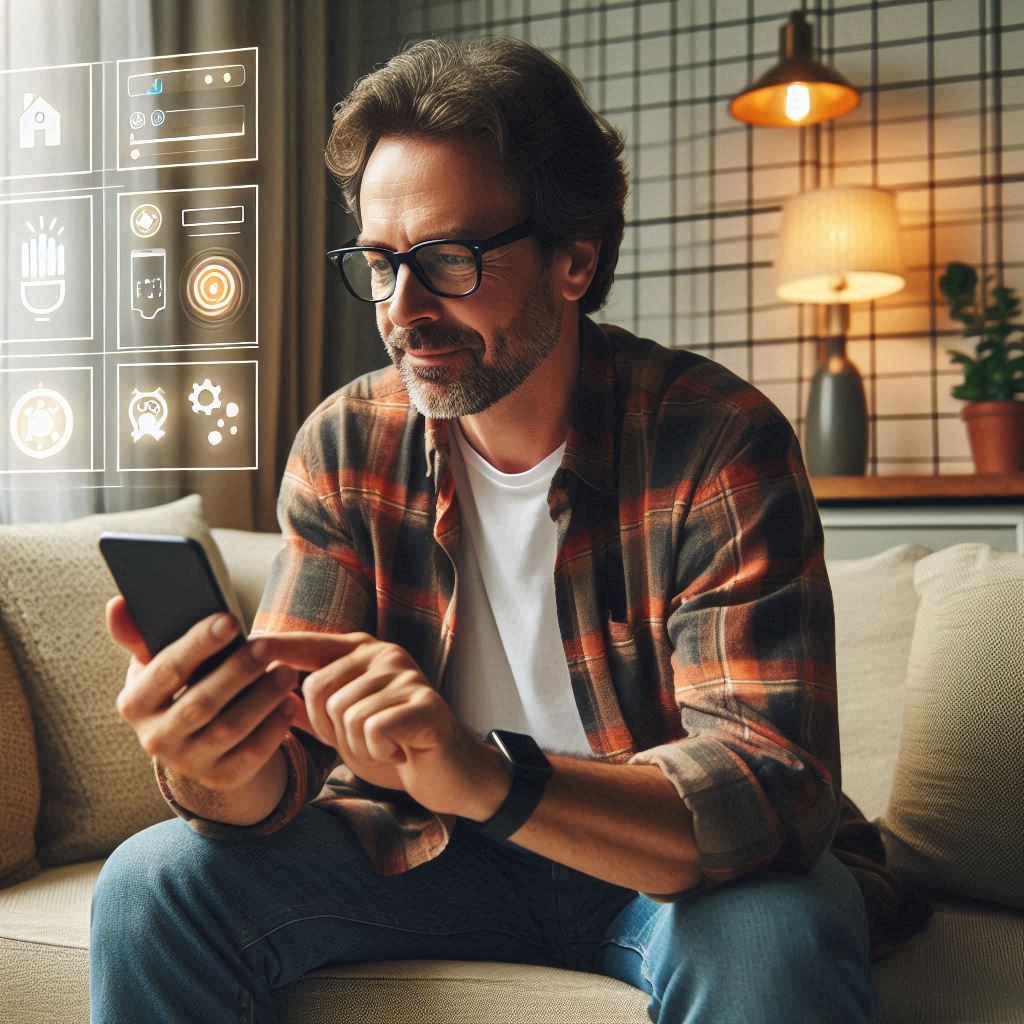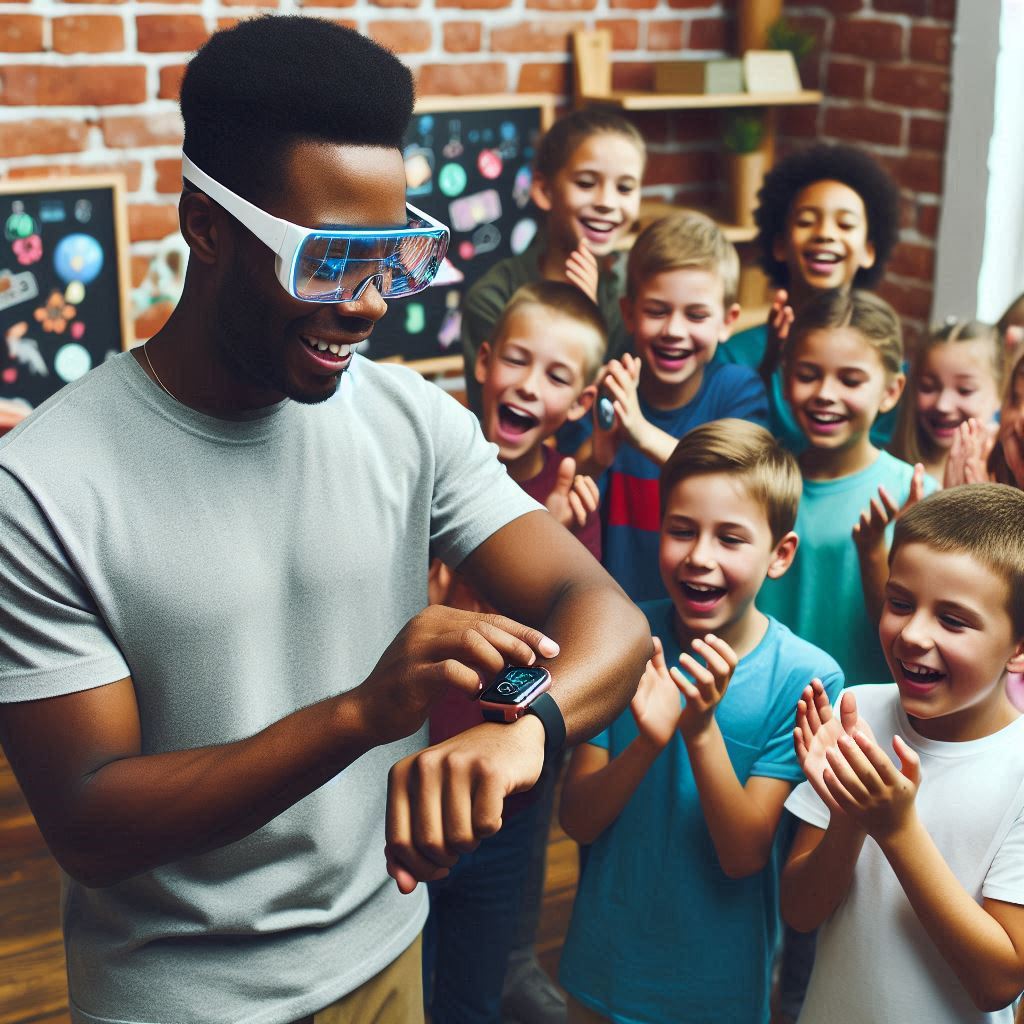Introduction
let’s explore tech-enhanced aging: innovations improving senior living experiences
Explanation of the demographic shift towards an aging population
The world’s population is rapidly aging.
By 2050, the number of people aged over 65 will surpass 1.5 billion.
This demographic shift presents unique challenges for society, particularly in providing adequate care.
As a result, we must explore innovative solutions to enhance the quality of senior living.
Overview of how technology is revolutionizing senior living experiences
Technology plays a crucial role in transforming senior living experiences.
Advancements in various fields create opportunities to improve health, safety, and social connections.
This revolution helps seniors maintain their independence while accessing essential services.
The integration of technology empowers older adults to lead fulfilling lives.
Brief mention of what the post will cover regarding innovations and their benefits
In this post, we will examine several key innovations enhancing senior living.
From smart home technology to telemedicine, these developments significantly impact daily life.
We will also discuss wearable devices, robotics, and social applications designed specifically for seniors.
Each of these innovations offers unique benefits that address the specific needs of older adults.
Smart home technologies provide convenience and safety.
Devices like smart lights, thermostats, and security systems allow seniors to control their environment easily.
Innovative Tech Solutions, Tailored for You
Our leading tech firm crafts custom software, web & mobile apps, designed with your unique needs in mind. Elevate your business with cutting-edge solutions no one else can offer.
Start NowThis technology enhances daily living while increasing independence.
For example, voice-activated assistants help seniors manage tasks without assistance.
Telemedicine revolutionizes healthcare access for older adults.
Patients can schedule doctor visits remotely, reducing the need for travel.
This innovation saves time and enhances the quality of care.
Seniors can consult specialists from the comfort of their homes, ensuring timely treatment.
Wearable devices monitor health metrics, such as heart rate and activity levels.
These devices provide valuable data to caregivers and healthcare providers.
They promote proactive health management and timely interventions, helping prevent serious complications.
Moreover, they empower seniors to stay engaged in their well-being.
Robotics also plays a pivotal role in supporting independent living.
Assistive robots can help with daily tasks, providing companionship and aid.
These robots reduce the burden on caregivers while enhancing the quality of life for seniors.
In general, technology is redefining aging in place.
Innovations improve the overall senior living experience, allowing older adults to thrive.
The Importance of Tech in Senior Living
As individuals age, they often encounter various challenges that affect their quality of life.
These challenges can significantly impact their daily activities and overall well-being.
Understanding these challenges is crucial to exploring how technology can enhance senior living.
Common Challenges Faced by Older Adults
- Mobility Issues: Many seniors experience difficulties with balance and strength. These issues can limit their ability to move around freely.
- Health Monitoring: Chronic conditions often require regular monitoring. Seniors may struggle to track their health without assistance.
- Social Isolation: Older adults often face loneliness. This isolation can lead to serious mental health issues, including depression.
- Safety Concerns: Seniors may worry about falls or accidents at home. Safety becomes a paramount concern at this stage of life.
- Cognitive Decline: Many seniors experience memory loss or confusion. This decline can affect their ability to live independently.
These challenges can harm the physical and mental health of older adults.
Fortunately, modern technology offers innovative solutions to address these specific issues.
Technological advancements have the potential to improve the overall living experience for seniors.
The Role of Technology in Addressing Senior Challenges
Technology plays a crucial role in enhancing the lives of older adults.
It provides practical tools that help manage many of the daily struggles seniors face.
Below are some ways technology addresses these challenges:
Seamless API Connectivity for Next-Level Integration
Unlock limitless possibilities by connecting your systems with a custom API built to perform flawlessly. Stand apart with our solutions that others simply can’t offer.
Get StartedEnhancing Mobility
- Mobility Aids: Power scooters and smart walking aids assist seniors in moving around with confidence.
- Home Automation: Smart home devices allow elderly individuals to control their environment easily, reducing the risk of injury.
- Telehealth Services: Virtual care options help seniors access healthcare without needing to travel, enhancing their overall mobility.
Health Monitoring
- Wearable Devices: Smartwatches and fitness trackers monitor heart rates, activity levels, and other health metrics.
- Remote Medical Devices: Devices that measure blood pressure, glucose levels, and other vital signs allow seniors to stay informed about their health.
- Medication Management Apps: These apps remind seniors when to take medications and track refill dates, ensuring they adhere to treatment schedules.
Reducing Social Isolation
- Video Calling: Applications like Zoom and Skype enable seniors to connect with family and friends, fostering social interaction.
- Social Media: Platforms such as Facebook can help older adults stay in touch with loved ones and meet new people.
- Online Communities: Various online forums and support groups provide opportunities for engagement and shared interests.
Enhancing Safety
- Emergency Response Systems: Devices like medical alert systems provide immediate help in emergencies.
- Home Security Systems: Smart cameras and alarms enhance home safety, giving seniors peace of mind.
- Fall Detection Technology: Sensors that detect falls can alert caregivers or emergency services quickly, reducing response times.
Supporting Cognitive Functions
- Cognitive Training Apps: Games and activities designed to boost memory and cognitive skills assist seniors in staying sharp.
- Reminder Devices: Smart speakers can remind seniors about daily tasks and appointments, aiding their memory.
- Digital Companions: Robots and AI-driven platforms can provide companionship and stimulate cognitive engagement.
As we explore the role of technology in supporting senior living, it’s important to acknowledge the growing adoption rates among older adults.
Many seniors are embracing technology, allowing them to connect with others and manage their health better.
Statistics on Technology Adoption Among Seniors
- According to the Pew Research Center, 73% of seniors aged 65 and older now use the internet.
- A survey conducted by AARP found that 70% of adults aged 50 and older own a smartphone.
- A report from the International Journal of Medical Informatics reveals that telehealth use among seniors surged by 63% during the COVID-19 pandemic.
- Research indicates that 40% of seniors use wearable fitness trackers and health monitors.
These statistics show a significant shift in the attitudes of older adults toward technology.
As seniors recognize the benefits, they are more likely to embrace these helpful innovations.
In summary, aging adults face numerous challenges that impact their quality of life.
Technology offers tools and solutions that effectively address these issues.
From mobility aids to health monitoring devices, the role of technology is undeniable in promoting healthy aging.
This development allows seniors to maintain their independence, prioritize health, and enjoy richer social lives.
As technology continues to advance, solutions for senior living will only improve, reinforcing the importance of recognizing and supporting this vital demographic.
By enhancing the lives of older adults, technology fosters a sense of empowerment and well-being.
Ultimately, a tech-enhanced approach to aging presents a promising opportunity for seniors to thrive and enjoy life to the fullest.
Read: The Impact of Smart Cities on Urban Living: A Guide for City Dwellers
Smart Home Technologies
Introduction to Smart Home Technologies
Smart home technologies revolutionize living spaces for seniors, offering safety, convenience, and independence.
These innovations include voice-activated assistants, smart thermostats, and automated lighting systems.
Seniors can seamlessly manage their daily tasks with these advanced tools, improving their quality of life.
Key Smart Home Technologies
- Voice-Activated Assistants: Devices like Amazon Alexa or Google Assistant allow seniors to control their homes with voice commands. They can set reminders, control appliances, and even ask for information, simplifying everyday tasks.
- Smart Thermostats: These devices automatically adjust home temperatures for comfort. They learn user preferences and reduce energy costs while allowing remote control for added convenience.
- Automated Lighting Systems: Motion sensors illuminate hallways and entrances, preventing falls and ensuring nighttime security. Seniors can control lights with their voice or via smartphone apps, adding flexibility and safety.
Benefits of Home Automation for Safety and Convenience
Smart home automation provides profound benefits for seniors:
- Increased Safety: Monitoring systems, fall detection devices, and emergency assistance features enhance safety.
- Improved Convenience: Remote access, task automation, and energy efficiency features allow seniors to manage their homes effortlessly.
These technologies foster independence, reduce reliance on caregivers, and provide peace of mind for family members.
Real-Life Case Studies
- Mary, 77: Mary uses a voice-activated assistant for daily tasks, and motion-activated lights keep her safe at night. Her smart system alerts her daughter if she remains inactive for too long.
- John and Alice, 82 & 79: This couple enjoys smart home technologies, including a security system, automated thermostat, and smart speakers. They stay engaged and connected with their family via video calls.
Smart home technologies enhance seniors’ lives, ensuring safety, independence, and emotional well-being.
continued innovations in smart home technologies.
Read: How Wearable Tech is Shaping the Future of Health Tracking for Fitness Enthusiasts
Health Monitoring and Wearable Devices
The emergence of technology has significantly transformed the way we approach health and wellness.
Wearable health gadgets such as fitness trackers and smartwatches are at the forefront of this revolution.
These devices empower seniors to take control of their health and well-being in ways previously unimaginable.
Overview of Wearable Health Gadgets
Wearable health gadgets span various forms, each designed to meet specific needs.
Transform Business with Custom CRM & ERP Solutions
Elevate your operations with a CRM or ERP tailored for you. Let’s build the perfect solution that others can't replicate—crafted to match your business's needs like no other.
Get StartedHere are some common types:
- Fitness Trackers: These devices monitor physical activity and encourage seniors to lead active lives.
- Smartwatches: Equipped with advanced features, these devices offer notifications, health metrics, and connectivity options.
- Heart Rate Monitors: They provide continuous monitoring of heart rates during daily activities and exercises.
- Sleep Trackers: These gadgets analyze sleep patterns and offer insights for better sleep health.
- ECG Monitors: Some wearables can perform electrocardiograms, helping detect irregular heart rhythms.
How These Devices Help in Monitoring Health Metrics
Health monitoring through wearables brings several benefits to seniors.
They help in tracking various health metrics, including:
- Heart Rate: Continuous heart rate monitoring assists in identifying any abnormalities.
- Activity Levels: These devices encourage regular movement, which is crucial for maintaining health.
- Caloric Burn: Wearables help seniors track their calorie expenditure during physical activities.
- Steps Count: Many devices count daily steps, promoting a more active lifestyle.
- Temperature Monitoring: Some advanced wearables can monitor body temperature, alerting users to potential health issues.
By providing instant access to health metrics, these gadgets offer seniors valuable insights into their health.
Knowing these metrics allows them to make informed health and lifestyle decisions.
For example, seeing their heart rate increase during exercise may motivate them to maintain or increase their activity levels.
Discussion on Remote Monitoring and Telehealth Services
The rise of remote monitoring transforms how seniors access healthcare services.
Here’s how these innovations enhance healthcare management:
- Remote Health Monitoring: Health professionals can track patients’ vital signs remotely through connected devices.
- Telehealth Services: Virtual appointments eliminate the need for travel, making healthcare accessible for seniors.
- Real-Time Alerts: Many wearables and platforms send alerts to healthcare providers when anomalies occur.
- Chronic Disease Management: Remote monitoring helps manage conditions like diabetes or hypertension effectively.
- Medication Reminders: Wearables can notify seniors when it’s time to take medications, enhancing adherence.
The integration of remote monitoring and telehealth into senior care helps bridge gaps in access to healthcare.
These innovations ensure that seniors receive timely interventions, reducing the risk of serious health events.
Empowering Independence
Wearable devices also empower seniors to live independently while ensuring their health is monitored.
Equipped with these gadgets, seniors feel more secure at home.
They know their health metrics are measured continuously, enabling proactive care.
Wearables also foster independence by providing data to caregivers and family members
Loved ones can receive updates on a senior’s health status, ensuring peace of mind.
This level of connection reduces anxiety while enhancing safety.
Challenges and Considerations
Despite the numerous benefits of wearable health gadgets, certain challenges remain.
Here are a few considerations:
- Initial Costs: Some high-end devices come with a significant price tag, deterring potential users.
- Technology Adaptation: Seniors may struggle to learn how to use these devices effectively.
- Data Overload: Too much data can overwhelm users, making it harder to focus on critical metrics.
- Battery Life: Many wearables require regular charging, which can be overlooked.
- Privacy Concerns: The security of personal health data remains a significant concern.
Overcoming these challenges is essential for realizing the full potential of these devices in senior care.
Wearable health gadgets signify a crucial shift in how seniors manage their health.
The ability to monitor health metrics and engage with healthcare providers remotely enhances the quality of life.
The continuous advancements in technology promise even greater possibilities for the future.
As more seniors adopt these devices, they will likely notice significant improvements in their well-being.
The empowerment through data access and connectivity transforms daily living experiences.
Tailored Tech Solutions to Drive Your Business Forward
Maximize your business potential with custom tech strategies. We deliver bespoke solutions that others can’t match, designed to solve your specific challenges with precision and impact.
Contact UsInvesting in wearables can significantly enhance health and wellness management for seniors in their golden years.
By embracing these innovations, we take one step closer to a healthier, more connected future.
Read: AI-Powered Productivity: Boosting Your Daily Workflow

Assistive Technologies for Mobility and Daily Living
As the global population ages, assistive technologies for mobility and daily living become crucial in enhancing seniors’ quality of life.
Many innovations support seniors as they navigate their daily routines, ultimately promoting independence and dignity in their lives.
Assistive Devices: Enhancing Mobility
Assistive devices play a significant role in allowing seniors to maintain their mobility.
These devices vary in complexity and purpose, yet each serves to improve independence.
- Wheelchairs: These devices offer seniors mobility both indoors and outdoors. Wheelchairs come in manual and powered designs. Electric wheelchairs provide additional convenience and ease of use.
- Scooters: Mobility scooters allow seniors to navigate larger areas, such as shopping centers or parks. They operate much like small vehicles and are often user-friendly.
- Walkers and Canes: These basic mobility tools help seniors remain steady on their feet. They provide additional support when walking, preventing falls and promoting safety.
- Stairlifts: Stairlifts assist seniors in moving between floors safely. They minimize the risk of falls and enable easy access to multi-story homes.
- Mobility aids for specific needs: Devices such as lift chairs or customized seating also cater to specific disabilities. They improve comfort and usability for seniors, allowing them to engage with their environment more effectively.
Innovative Technologies: Robotic Assistants
Robotics and automation have made significant strides, offering seniors advanced technologies that streamline day-to-day tasks.
Robotic assistants are transforming how many seniors manage their homes and personal care.
- Robotic vacuum cleaners: These small devices autonomously clean floors. Seniors can maintain a clean living space with minimal effort, enhancing their comfort in their homes.
- Telepresence robots: These robots allow seniors to maintain social interactions. They enable virtual visits with family or healthcare providers, fostering a sense of connection.
- Companion robots: Designed to provide emotional support, these robots engage seniors in conversation and activities. They can help combat loneliness and enhance mental well-being.
- Smart home devices: Automated assistance systems can manage various household tasks. Voice-activated devices control lighting, temperature, and security, making seniors’ lives easier.
- Food preparation robots: These devices help seniors prepare meals. By simplifying cooking processes, they enhance nutrition and foster independence in the kitchen.
Automated Medication Dispensers
Keeping track of medications can become a challenge for seniors.
Automated medication dispensers provide timely reminders and ensure that seniors take their medications accurately.
- Medication management: These devices organize pills by dose and time, preventing errors. Seniors benefit from increased confidence in taking their medications correctly.
- Alert systems: Many dispensers come equipped with alarms and notifications. These alerts remind seniors when it’s time to take their medications, enhancing adherence.
- Remote monitoring: Caregivers can monitor medication intake remotely. This feature allows for better oversight and timely intervention in case of non-adherence.
- Integration with health systems: Some automated dispensers connect with healthcare providers or pharmacies digitally. This integration helps keep comprehensive medication records and provides updates to caregivers.
Impact on Independence and Quality of Life
Assistive technologies significantly impact the independence and quality of life for seniors.
They provide the necessary support for seniors to remain active and engaged.
- Enhanced mobility: Mobility aids empower seniors to navigate their environments independently. These tools decrease reliance on caregivers and family members, fostering autonomy.
- Increased safety: Technologies like stairlifts or mobility scooters reduce the risk of falls. Seniors experience greater confidence while moving around their homes and communities.
- Improved mental health: Technologies that facilitate social interactions, like telepresence robots, alleviate feelings of loneliness. Better social connections enhance emotional well-being for seniors.
- Better medication adherence: Automated medication dispensers ensure that seniors stay on track with their prescriptions. Improved health outcomes stem from consistently taking medications as directed.
- Promotion of healthy living: Robotics in food preparation and daily tasks encourage seniors to maintain a nutritious diet. This support leads to healthier lifestyles and improved overall well-being.
in fact, assistive technologies play a pivotal role in improving mobility and daily living for seniors.
Innovations such as robotic assistants and automated medication dispensers elevate the standard of living for seniors.
By promoting independence and improving quality of life, these technologies contribute positively to the aging experience.
The future holds immense potential for further advancements in assistive technologies.
Continued innovation promises to meet the diverse needs of seniors, ensuring they enjoy fulfilling lives as they age in place.
Read: Advanced Automation: How AI Manages Life’s Routine Tasks
Communication and Social Engagement Technologies
Overview of Communication Platforms
Technology has revolutionized the way we communicate.
Today’s communication platforms are versatile and user-friendly.
They cater to seniors, keeping them connected to friends and family.
Popular options include:
- Video Calling Applications: Platforms like Zoom, Skype, and FaceTime allow seniors to engage in real-time conversations with loved ones from anywhere.
- Social Media: Facebook, Instagram, and Twitter provide avenues for seniors to share photos, updates, and messages.
- Messaging Apps: Apps like WhatsApp and Telegram enable instant communication, whether via text or voice messaging.
- Email: Traditional email remains relevant, allowing seniors to send longer messages and share attachments easily.
These platforms serve various purposes.
They help maintain relationships and support social engagement.
The simplicity and accessibility of these technologies make them a boon for seniors, especially those with limited mobility.
The Significance of Technology in Combating Loneliness
Loneliness is a pressing issue among seniors.
Research indicates that isolation can lead to serious health issues.
Fortunately, technology offers solutions.
Various studies show how effective communication technologies can promote social interaction.
Here’s how technology combats loneliness:
- Real-time Interaction: Video calls create a feeling of connection, making seniors feel less isolated.
- Accessible Connection: Communication platforms allow seniors to reach family members across distances. This ease of connection is essential.
- Engagement with Community: Online forums enable seniors to engage with others who share their interests or experiences.
- Support Networks: Various groups and organizations use technology to build support networks for seniors. These networks help in providing emotional and logistical support.
- Increased Participation: Many technology platforms encourage participation in discussions, activities, and even virtual events.
Using these technologies, seniors can counter feelings of loneliness effectively.
Engaging with others boosts their mental well-being and emotional health.
They enjoy a sense of belonging and purpose.
It enables them to share experiences, stories, and laughter, which are essential for a happy life.
Success Stories and Testimonials from Seniors
Real-life success stories highlight the positive impact of communication technologies on seniors.
Many seniors have shared how these platforms changed their lives.
Here are a few inspiring testimonials:
- Mary, 78: After her husband passed away, Mary felt isolated. She learned to use Skype, connecting with her grandchildren regularly. Now, she attends virtual family gatherings, feeling included and valued.
- George, 84: George initially resisted social media. However, after his daughter set up a Facebook account for him, he began connecting with old friends. This renewal of friendships transformed his social life.
- Esther, 70: Esther joined an online book club. Through video calls, she discusses literature with fellow book lovers. This new sense of community revived her love for reading and meeting new people.
- Henry, 82: Henry joined a virtual exercise class through a messaging app. Engaging with others during workouts boosted his physical and mental health. He formed friendships that extended beyond the class.
- Louise, 76: Louise regularly attends online church services. These virtual gatherings keep her spiritually engaged and socially connected, fostering a sense of community.
These testimonials demonstrate how communication technologies facilitate connections.
They make it easier for seniors to engage socially.
They combat feelings of loneliness while enriching their lives.
Challenges and Solutions
While technology offers numerous benefits, challenges persist.
Seniors may face barriers to adopting these technologies.
Common challenges include:
- Technical Literacy: Some seniors may struggle with using technology. Their unfamiliarity creates frustration and reluctance to participate.
- Accessibility Issues: Seniors with visual or hearing impairments may find technology challenging to use effectively.
- Privacy Concerns: Many seniors worry about sharing personal information online. They desire safety and security while using communication platforms.
- Device Costs: The expense of smartphones, tablets, or computers may deter some seniors from utilizing technology.
To overcome these challenges, various solutions exist:
- Educational Programs: Community centers and organizations can offer classes to teach seniors how to use technology.
- User-Friendly Devices: Technology companies should design more intuitive devices for seniors. These devices should prioritize ease of use.
- Supportive Resources: Online tutorials and smartphone helplines can guide seniors in navigating technology.
- Enhancing Security Measures: Educating seniors about online safety tips can alleviate privacy concerns.
By addressing these challenges, society can empower seniors.
They can access the benefits of technology, reducing feelings of isolation.
Communication and social engagement technologies significantly enhance senior living experiences. These platforms provide crucial connections.
They engage seniors, prevent loneliness, and foster a sense of community.
As we continue to innovate, integrating user-friendly technologies remains vital.
Ensuring accessibility and security enhances the overall experience for seniors.
The current landscape promises a brighter future where technology enriches the lives of our elder population, allowing them to enjoy meaningful interactions and connections.
Innovations in Transportation
As society progresses, older adults encounter a range of innovative transportation options.
These new methods enhance their mobility and improve access to essential services.
In this section, we will explore the various advances in transportation tailored to seniors, examining rideshare services, autonomous vehicles, and the barriers to tech adoption.
Evolution of Transportation Options for Seniors
Today, seniors enjoy a variety of transportation choices beyond traditional public transit.
These options have emerged to cater to an aging population that values independence and mobility.
- Rideshare Services: Apps like Uber and Lyft provide convenient methods for seniors to book rides. Many companies have developed user-friendly interfaces specifically for older adults.
- Autonomous Vehicles: Self-driving cars promise to revolutionize transportation for seniors. They offer a safe and reliable travel option, minimizing the need for human drivers.
- Accessible Public Transit: Many cities have improved public transit systems to enhance accessibility. Specialized services for seniors ensure they can reach essential services easily.
- Mobility Scooters and E-bikes: These personal mobility devices give seniors greater independence. They enable older adults to navigate their communities at their own pace.
Enhancing Mobility and Access to Services
Innovative transportation modes significantly impact seniors’ ability to engage with the world.
Increased mobility enhances their quality of life in several ways.
- Access to Healthcare: Rideshare and autonomous vehicles ensure timely trips to medical appointments. This reduces missed appointments and promotes overall health maintenance.
- Social Engagement: Transportation innovations enable seniors to maintain social connections. They can visit friends, attend community events, and participate in activities.
- Access to Groceries and Essentials: Reliable transportation allows seniors to purchase necessary items. Rideshare services can bring them to grocery stores and pharmacies quickly.
- Enhanced Independence: New technologies foster a sense of freedom for seniors. They can make their own travel decisions without relying on family or friends.
Barriers to Tech Adoption in Transportation
Despite the advancements, some challenges hinder the widespread adoption of these technologies among seniors.
Understanding these barriers is essential to maximize their potential.
- Digital Literacy: Some seniors may struggle with smartphone technology. Many apps require a level of tech proficiency that may be intimidating.
- Cost Concerns: The cost of rideshare services can be a deterrent. Seniors on fixed incomes may find expenses difficult to manage.
- Safety Concerns: Many seniors express concerns about safety when using rideshare systems. Trusting a stranger with their transportation can be a significant hurdle.
- Physical Limitations: Older adults with mobility issues may find it hard to enter or exit vehicles. This can limit their ability to utilize available services.
Solutions for Overcoming Barriers
To promote the adoption of innovative transportation solutions, we must address these challenges.
Here are several strategies to consider:
- Education and Training: Providing classes or workshops can enhance digital literacy. These programs should focus on teaching seniors how to use ride-sharing apps.
- Financial Assistance Programs: Establishing subsidies for rideshare services can help. This will alleviate financial burdens on low-income seniors.
- Safety Assurance Initiatives: Rideshare companies can implement safety measures tailored to seniors. Features like driver identification and ride tracking can build trust.
- Transportation Aids: Investing in assistive technology will help seniors with mobility issues. Features like ramps or assistance from drivers can enhance accessibility.
The evolution of transportation options for seniors offers exciting advancements.
Innovations like rideshare services and autonomous vehicles promote independence and mobility.
However, barriers exist that hinder their full adoption.
By addressing these obstacles, society can ensure seniors enjoy the benefits of these transportation innovations.
The future of senior mobility looks promising, bolstered by technology and thoughtful solutions tailored to their needs.
As we move forward, we must continue to support and enhance these innovations.
Embracing technology will create a more inclusive and accessible world for seniors.
Ultimately, improving transportation options empowers older adults, allowing them to live vibrant and fulfilling lives.
Future Trends in Tech-Enhanced Aging
Emerging Technologies in Senior Care
Innovations in technology continually reshape how we approach aging.
As society embraces advanced tech, seniors benefit significantly.
Here are some key technologies emerging in senior care:
- Artificial Intelligence (AI): AI algorithms analyze health data. They help identify patterns, enabling early intervention in health issues.
- Smart Sensors: These devices monitor daily activities. Sensors track movement, detect falls, and alert caregivers if needed.
- Wearable Technology: Wearables like fitness trackers promote healthy living. They encourage activity and monitor vital signs continuously.
- Telehealth Services: Virtual visits keep seniors connected with healthcare providers. This option enhances accessibility and reduces travel time.
- Home Automation: Smart homes integrate technology for convenience. Voice-activated systems enable control over lighting, temperature, and security systems.
Predictions for the Future of Senior Care
The landscape of senior care will transform with technological innovation.
Here are predictions on how these trends will shape the future:
- Increased Independence: Technology will empower seniors to live independently longer. Smart devices will facilitate daily activities, reducing reliance on caregivers.
- Enhanced Safety: Advanced monitoring systems will provide real-time alerts. This increased safety will allow families to maintain peace of mind.
- Personalized Health Care: AI will create customized care plans. Healthcare providers will use data insights to tailor treatments for individuals.
- Community Connection: Social platforms will help seniors stay connected. These connections will combat loneliness, enhancing mental well-being.
- Integration of Care Services: Technology will unite various healthcare services. This integration streamlines processes and improves overall care coordination.
Personalized Experiences through Technology
Personalization stands at the forefront of tech-enhanced aging.
Technology allows for tailored experiences in numerous ways:
- Customized Health Monitoring: Wearable devices provide individualized health data. Seniors can receive alerts specific to their health conditions.
- Tailored Fitness Programs: AI-driven apps design fitness routines. These routines consider each individual’s health status and capabilities.
- Personalized Nutrition Plans: Technology analyzes dietary preferences and restrictions. This approach promotes healthier eating habits for seniors.
- Adaptive Learning Systems: Educational platforms adjust content based on user engagement. Seniors can learn at their own pace and interest levels.
- Virtual Companionship: AI chatbots provide interaction. These companions can help alleviate feelings of loneliness and isolation.
The future of senior care will be exciting and transformative.
Emerging technologies promise to enhance quality of life for seniors.
Trends point towards greater independence, safety, and connection.
Personalization through technology will be key in creating meaningful experiences.
Our society must embrace these innovations to improve senior living.
By fostering a tech-enhanced environment, we can empower our aging population.
Conclusion
Recap of the key points discussed regarding innovations in senior living
Innovations in technology are transforming senior living experiences.
Smart home devices enhance safety and convenience.
Wearable health monitors empower older adults to manage their wellness.
Virtual reality offers engaging social experiences, reducing isolation.
Telehealth services provide easy access to healthcare professionals.
Emphasis on the importance of embracing technology to improve the lives of older adults
Embracing technology significantly improves the quality of life for older adults.
These tools promote independence and encourage active lifestyles.
Tech has become a vital component of modern caregiving.
By integrating these solutions, we create supportive environments for seniors.
Call-to-action for stakeholders (families, caregivers, communities) to advocate for and invest in tech-enhanced aging solutions
Families and caregivers play a crucial role in this transition.
They can advocate for tech-enhanced aging solutions in communities.
Support from loved ones can drive acceptance of new technologies.
Involvement can ensure older adults benefit from these innovations.
Communities must also invest in technological advancements.
Local governments and organizations should prioritize funding for these initiatives.
Collaboration between tech companies and senior living facilities is essential.
By working together, we can create tailored solutions that address the unique needs of older adults.
As we look to the future, let’s invest in a tech-savvy aging process.
The potential to enhance senior living experiences is immense.
Together, we can support older adults in leading fulfilling lives. Let us embrace and promote these innovations for a better tomorrow.
Before You Go…
Hey, thank you for reading this blog post to the end. I hope it was helpful. Let me tell you a little bit about Nicholas Idoko Technologies.
We help businesses and companies build an online presence by developing web, mobile, desktop, and blockchain applications.
We also help aspiring software developers and programmers learn the skills they need to have a successful career.
Take your first step to becoming a programming expert by joining our Learn To Code academy today!
Be sure to contact us if you need more information or have any questions! We are readily available.











